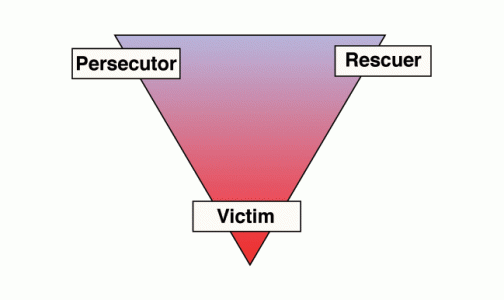How do you experience relationships? Are you confident in your connection with others and able to relate easily? Do you long for the perfect relationship, but feel dissatisfied once you’re in one and struggle to get out? Do you feel terrified of being alone or abandoned, and will do whatever it takes to keep your loved ones close, even if it means sacrificing part of who you are?
Whether or not you’ve experienced these yourself, you probably know someone else who has. These patterns in relationships can create despair, hopelessness, or distress. Often, these patterns are rooted in the theory of adult attachment styles.
What is attachment?
Attachment is an individual’s beliefs about his or her safety, security, and protection in relation to others, formed by early interactions between child and caregiver. Attachment theory is based on the research of John Bowlby, who was curious about the distress infants showed when separated from their caregivers. He believed that children use these behaviors in order to get their caregiver’s attention and essentially ask their caregiver, “Can I trust you to respond? Will you take care of my needs?” The response of the caregiver forms the foundation of the child’s attachment style.
Building on Bowlby’s research, Mary Ainsworth put this theory into the research lab. She created the “strange situation,” an environment where a child was brought by their caregiver into a playroom where another adult was present. The caregiver would leave for a short time and then return. Researchers observed the response of the infant when the parent left, while the parent was outside the room, and upon the return of the parent.
She observed four different responses in children. Securely attached children were upset when their caregiver left, but comforted by their return. This was the most common response (60% of children) and indicated that the caregivers were responsive to the needs of the child.
Insecurely attached children were impacted by lack of responsiveness or inconsistent responses from their caregivers. They took one of three forms:
Insecure-resistant attachment – These children showed high levels of distress when their caregiver left. They were unable to be soothed upon reuniting with their caregiver, almost as if they were “punishing” the caregiver for leaving.
Insecure-avoidant attachment – These children weren’t distressed by their caregiver leaving and ignored their caregiver upon re-entry, often choosing to continue playing rather than engaging with their caregiver.
Insecure-disorganized attachment – These children demonstrated an unpredictable response that could not be categorized. These responses were more commonly correlated with childhood abuse.
Adult Attachment Styles
Later on, researchers Hazan and Shaver extended these findings into adulthood. They concluded that attachment styles in childhood affected the way adults experienced intimacy and connection in romantic relationships.
For example, if you experienced insecure attachment as a child, you learned at a young age that important people will not respond appropriately to your needs. As an adult, you may find yourself in similar relationships that confirm the belief formed early on that you cannot depend on others to meet your needs, or that you are unlovable and aren’t deserving of love or care. Unfortunately, you can then become trapped in a cycle of relationships where you expect this belief to be true, and (in self-fulfilling prophecy) reaffirm the belief.
Read the descriptions below about adult attachment styles and pay attention to if you relate to any one of them, or if you know someone who does. You can also take this assessment online to discover your attachment style.
Secure attachment
These individuals are confident in themselves and in their ability to be loved and cared for by those close to them. This doesn’t mean that they are always without insecurity – in fact, it is normal for anyone to have some level of hesitation in these areas. However, at their core, secure individuals believe they are worthy of love and trust that their loved ones will respond to their needs. They are willing to both depend on others and can also be depended upon by others.
In relationships, securely attached individuals are interdependent. They can separate from their partner, have their own interests, and encourage their significant other’s interests. But they can also come back to their relationship feeling connected, loved, and supported with their partner. They both seek and provide support to their partners, and therefore are the most satisfied. They tend to have honesty and equality in their relationships.
Anxious (preoccupied) attachment
Anxiously attached individuals long to be loved and worry consistently that they are not. They become frustrated and angry when their attachment needs aren’t met in their primary relationships, and will attempt to create intimacy when they are feeling this way. Sadly, this often backfires.
In relationships, anxiously attached individuals are over-dependent. They believe their partner will “complete” them. They hold to the fantasy that finding a significant other to love them will solve their problems and make their lives better. This isn’t real love, but an obsession fueled by fantasy. Rushing into relationships, these individuals don’t allow enough time to build real trust, but instead create a false sense of security with their partner Love addicts tend to fall into this category. They desire to be very close, cling to their partners for safety and security, and crave reassurance that they are loved. Unfortunately, this often causes their partners to withdraw, creating a vicious cycle that reaffirms their beliefs in their own flawed nature and inability to be loved.
Avoidant (dismissing-avoidant) attachment
Those with avoidant attachment styles struggle with the intimacy required for close relationships, preferring to be on their own without any others depending on them. They dismiss the need for close relationships, having used that behavior to cope with early childhood experiences where they were responsible for caregivers’ emotional needs and learned to deny or shut down their own as a result. In fact, shutting down emotionally became an adaptive way of protecting themselves.
In relationships, these individuals prefer to be independent, creating emotional distance between themselves and their partners, often as a way to protect against smothering or feeling consumed by their partner. They learned that the way to get their needs met is to pretend to have no needs. This can easily detach from relationships because of lack of consideration for their importance. Sex addiction is more common in these individuals.
Fearful-avoidant attachment
Fearful-avoidant individuals have a strong sense of ambivalence about their relationships, switching between feeling anxious about losing their loved one and avoidance of emotional closeness. They have difficulty managing their overwhelming emotions. You might see this type as chaotic and unpredictable, and even they feel confused by the near-constant attempts to balance just the right amount of closeness with someone.
Often this stems from a caregiver who was too close, enmeshed, or smothering with the child. They desired to go to their caregivers to get their needs met, but may have received a negative response when they reached out. In relationships, fearful-avoidant individuals exist on a roller-coaster of drama and intensity. They are both fearful of being abandoned and fearful of experiencing true intimacy with another person.
Adult Attachment Styles in Relationships
As mentioned earlier, it is common for anxious and avoidant individuals to be drawn to one another and create a cycle of disappointment. In some ways, being with a partner that reinforces childhood beliefs about the dependability of a caregiver feels familiar and therefore attractive. While it is better for both to build a relationship with a securely attached individual, those relationships often contain less intensity, which both the anxious and avoidant crave.
Fortunately, your adult attachment style is not a permanent death sentence for your love life. Understanding your natural tendency in attachment helps you to be aware of it when going into relationships. It can also be changed by “learned” attachment with corrective experiences in your romantic relationship and/or friendships, relationships in therapy, and other important people in your life. Being close to a responsive and kind individual can go a long way toward changing the dynamics of insecure attachment in adulthood.
Additional Resources
If you’re interested in learning more about attachment theory, check out these resources:
Attached: The New Science of Adult Attachment and How It Can Help You Find – and Keep – Love by Amir Levine and Rachel Heller
The Power of Attachment: How to Create Deep and Lasting Intimate Relationships by Diane Poole Heller
Attachments: Why You Love, Feel and Act the Way You Do by Dr. Tim Clinton and Dr. Gary Sibcy























